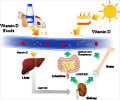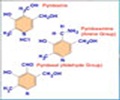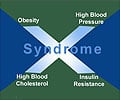Vitamin D insufficiency affects metabolic markers in children. The study highlights the importance of nutrition, sunlight, and the role Vitamin D plays in metabolic health.
- Vitamin D insufficiency linked to increased metabolic risk factors in Polish children
- W/HtR and 25OHD levels showed a negative relationship, indicating the role of Vitamin D in managing obesity
- Children with low Vitamin D levels displayed various metabolic abnormalities, potentially leading to cardiovascular risk
Vitamin D Deficiency in Obese Children Is Associated with Some Metabolic Syndrome Components, but Not with Metabolic Syndrome Itself
Go to source).
Vitamin D's Play a Role in Metabolic Syndromes and Cardiovascular Health
Vitamin D, which is essential for many biological functions, is generated in the skin as cholecalciferol (vitamin D3) and transformed into its active form, calcitriol, in the liver and kidneys. Deficiency, often caused by insufficient solar exposure, inadequate dietary intake, or renal and hepatic disorders, can lead to skeletal abnormalities. MetS, a group of risk factors that includes insulin resistance, high blood glucose levels, dyslipidemia, hypertension, and an increase in waist circumference, increases the risk of cardiovascular disease and type 2 diabetes.New evidence reveals a link between MetS, obesity-related diseases, and vitamin D inadequacy. Vitamin D influences glucose metabolism, insulin resistance, and inflammation, and has been linked to hormones such as leptin and adiponectin.
Consequently, low vitamin D levels could contribute to cardiovascular disease by impacting adipokine levels.
Link Between Vitamin D Levels, Obesity, and Metabolic Syndromes
The current study comprised 79 obese children, with an average age of 14.18 2.67 years, omitting those with endocrine-related obesity or on medication that affects metabolic or vitamin D and calcium metabolism.The International Obesity Task Force's BMI cut-off tables were used to assess participants' body mass index (BMI)-z score, fat-free mass (FFM%), fat percentage (FAT%), and severe obesity (severe ob).
The severe ob requirements were a BMI of 35.0, which is the same as an adult's BMI. All but one person had their waist-to-height ratio (W/HtR) and waist-to-hip ratio (WHR) computed, and 70 people had their projected muscle mass (PMM%) measured using bioelectrical impedance analysis.
Using enzyme-linked immunosorbent assay (ELISA) kits, venous blood samples were obtained for basic metabolic biochemical indicators and 25-hydroxyvitamin D (25OHD), a vitamin D marker. Fresh blood samples were processed within an hour of collection, and the resultant serum was stored at -20 °C.
Based on anthropometric and biochemical parameters, data was analyzed using STATISTICA software, with comparisons conducted between Vitamin D deficient (VDD) and Vitamin D sufficient (VDS) groups, as well as MetS-affected and unaffected groups.
For inter-group comparisons, the student t-test was used. For variance equality analysis, the Kolmogorov-Smirnov test was performed, and Pearson's correlation coefficient was utilized to calculate correlations. A p-value of 0.05 was used as the significance level.
The study was approved by the Medical University of Silesia's Ethics Committee (Approval No. KNW/0022/KB1/131/15), and all participants and caretakers provided informed permission. The research also followed the Helsinki Declaration's patient rights.
Understanding Vitamin D Deficiency, Metabolic Markers, and Gender Disparities
The current study group included 35 boys and 44 females with an average age of 14.18 2.67 years. Although there was no significant difference in BMI-z scores between groups, individuals in the VDD cohort exhibited a higher waist-to-height ratio (W/HtR), a significant metric for MetS.W/HtR and 25OHD levels were found to have a negative connection. Age differed significantly between groups, with females having notably greater vitamin D levels. Vitamin D (25OHD) levels significantly distinguished the groups, with the VDD group having deficient mean levels (12.66 4.76) and the VDS group having suboptimal mean levels (27.78 5.59).
There were differences in lipid metabolism, with the VDD group having lower high-density lipoprotein (HDL) and greater triglyceride (TG) levels than the VDS group, indicating a risk of dyslipidemia. There was no significant difference in glucose metabolism and insulin resistance across groups, including glucose and insulin levels at 0 and 120 minutes of the oral glucose tolerance test (OGTT) and homeostasis model assessment of insulin resistance (HOMA-IR) scores.
However, a substantial negative connection was discovered between 25OHD and glucose at 120 minutes (glu120). The individuals were subsequently divided into two groups based on their MetS diagnosis: 33 were diagnosed and 45 were not. Twelve people met only one MetS criterion, the majority met two and 16 and 17 met three or four MetS criteria, respectively.
While vitamin D levels did not differ significantly between the non-MetS and MetS groups, the variations in this parameter were large, with both groups having mean values in the deficient range.
Vitamin D Insufficiency in Polish Youth: Metabolic Implications and Global Comparisons
The current study looked at obesity and MetS biomarkers in Polish pediatric groups separated by VDS. The VDD group showed significant changes, with greater W/HtR and TG levels and lower HDL and adiponectin levels. There were no significant differences in the other metrics.The researchers discovered that low 25OHD was associated with increased W/HtR, an obesity metric that was more significant than earlier findings.
In terms of lipid metabolism, VDD children had significantly lower HDL and higher TG levels. Low HDL levels are associated with cardiovascular disease and type 2 diabetes. Despite previous unconvincing research, this study discovered a substantial difference in HDL levels between the VDD and VDS groups.
The current investigation discovered that atherogenic dyslipidemia (low HDL and high TG levels) was linked to atherosclerosis and insulin resistance. Elevated TG levels were seen in VDD children, and the difference was more pronounced than in previous investigations.
Lower adiponectin levels, which are prevalent in obese people, were found in the VDD group. Adiponectin, a component of the MetS, has been linked to insulin resistance and type 2 diabetes, albeit the evidence is conflicting. The leptin/adiponectin ratio, which measures insulin resistance, did not differ significantly between the VDD and VDS groups.
While no glucose metabolism-related indicators were found to be substantially different between the VDD and VDS groups, the correlation between 25OHD and glu120 levels suggested that vitamin D insufficiency may have an impact on glucose metabolism.
Even though there were no significant variations in MetS severity between the VDD and VDS groups, the study found noteworthy variances in MetS components. Despite these changes, all of the children had vitamin D insufficiency. As a result, children with low vitamin D levels demonstrated a variety of metabolic abnormalities that, if left untreated, might lead to serious problems such as cardiovascular risk.
The researchers claim that this study is unique in that it examines the relationships between vitamin D insufficiency and MetS components in Polish children while comparing results from other parts of the world.
Reference:
- Vitamin D Deficiency in Obese Children Is Associated with Some Metabolic Syndrome Components, but Not with Metabolic Syndrome Itself - (https://www.mdpi.com/2218-1989/13/8/914)
















